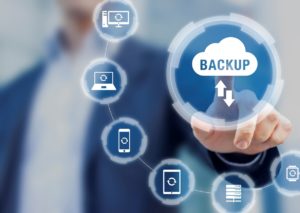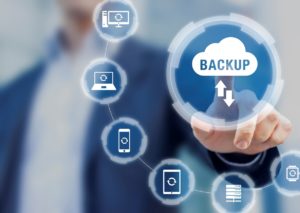
Data loss can be catastrophic to your business. Learn about the data recovery and backup options available today.
Backup recovery is an essential part of running a modern business. Today, we rely so much on our digitally stored data and the very computer systems that we work on that it’s not practical to fly without a backup recovery plan in place. Backups make it possible to restore from mistakes, from malfunctions, and from hacking attempts simultaneously, or whichever disaster comes first.
Whether your office is hit by a hurricane or a bad batch of ransomware, a good backup is the key to shaking off that setback and getting your team back on the grind with barely any interruption. Of course, not all backups are the same. What you choose to backup shows both your priorities and your versatility in restoring any data that is lost.
Let’s dive into the six primary types of backup you can take to aid in future data recovery efforts.
Key File Backups
The first and leanest way to make backups is to only create copies of your most important files. For some businesses, this is a practical approach. In fact, all businesses should have their key files backed up. Having just these files essentially at-the-ready ensures that anything from a data-entry error to a device disaster cannot lose more than a few days to a week of work, depending on how often you back up your key files.
Database Backups
Database backups tend to be quite large and need to be very effectively compressed to be practical. Database backups are also absolutely necessary if you have an active database that serves your website, your business venture, or both. Backing up the database can make it possible to completely restore all of your stored data, even if something corrupts your entire database or damages the host server. A database backup can keep a company afloat after a disaster and ensure that years of collected data are not lost.
Project Backups
Project backups are more selective and tend to focus around one person or team working on a shared project. Backing up a project has several useful purposes. If one team member accidentally changes or deletes an essential file, it can be restored from the latest active backup. If the project is damaged or even if you need to reset your project from a previous point for development reasons, you can restore your project from any recent backup.
Some active project backups take the form of “version control” which is a unique type of backup made for collaborative projects. It records each change made by each person, time-stamped and labeled so all changes can be reviewed and, if necessary, rolled back.
Personal Computer Backups
A personal computer backup is something you can help employees implement for themselves. This ensures that if anything like malware or a bad software update corrupts the device, that the device owner can restore almost everything about their computer from a recent backup. All personal files and installed programs should be included so that someone who needs their personal computer restored can jump right back into the saddle.
Workstation Reset Backups
Workstation backups are different from personal computer backups. A workstation, especially a hot-desk workstation, should not have any personal or even local files. Instead, a workstation backup is a save of a configuration. The software and the security settings are particularly important. With a complete workstation backup, restoring one of your hot-desks or even establishing a new workstation is a simple matter of loading the backup onto the computer. This is much easier than re-downloading, installing, and configuring each workstation when it needs to be built or reset.
Whole-Network Backups
Last but not least, there are backups for your entire network. A truly thorough backup can make it possible to restore your business network, local or cloud, with all the right settings. This is an ideal restoration plan for natural disasters, system-wide ransomware, and location-changes. If your business network, with all it’s custom configurations, is compromised then it could take months to re-establish. With the right backup, you won’t have to deal with setbacks and can quickly restore your computers from any known disaster type.
Contact us today to learn more about backups and disaster recovery plans. Our team can help and we look forward to meeting you.


